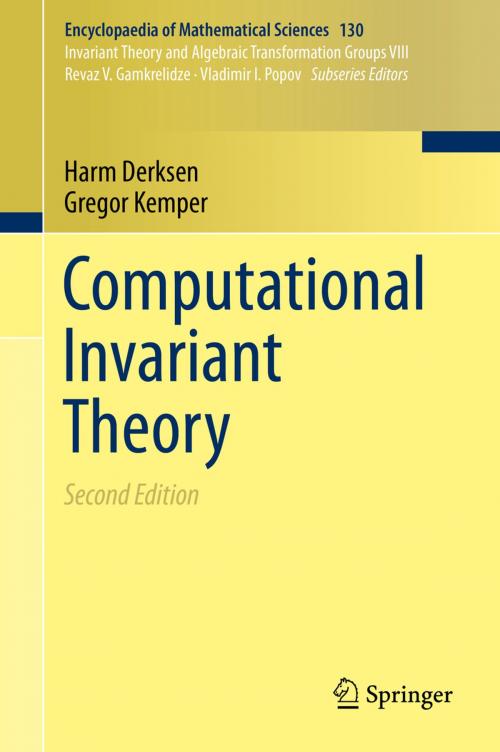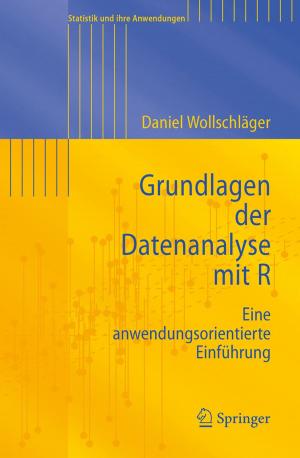Computational Invariant Theory
Nonfiction, Science & Nature, Mathematics, Group Theory, Computers, Programming| Author: | Harm Derksen, Gregor Kemper | ISBN: | 9783662484227 |
| Publisher: | Springer Berlin Heidelberg | Publication: | December 23, 2015 |
| Imprint: | Springer | Language: | English |
| Author: | Harm Derksen, Gregor Kemper |
| ISBN: | 9783662484227 |
| Publisher: | Springer Berlin Heidelberg |
| Publication: | December 23, 2015 |
| Imprint: | Springer |
| Language: | English |
This book is about the computational aspects of invariant theory. Of central interest is the question how the invariant ring of a given group action can be calculated. Algorithms for this purpose form the main pillars around which the book is built. There are two introductory chapters, one on Gröbner basis methods and one on the basic concepts of invariant theory, which prepare the ground for the algorithms. Then algorithms for computing invariants of finite and reductive groups are discussed. Particular emphasis lies on interrelations between structural properties of invariant rings and computational methods. Finally, the book contains a chapter on applications of invariant theory, covering fields as disparate as graph theory, coding theory, dynamical systems, and computer vision.
The book is intended for postgraduate students as well as researchers in geometry, computer algebra, and, of course, invariant theory. The text is enriched with numerous explicit examples which illustrate the theory and should be of more than passing interest.
More than ten years after the first publication of the book, the second edition now provides a major update and covers many recent developments in the field. Among the roughly 100 added pages there are two appendices, authored by Vladimi
r Popov, and an addendum by Norbert A'Campo and Vladimir Popov.
This book is about the computational aspects of invariant theory. Of central interest is the question how the invariant ring of a given group action can be calculated. Algorithms for this purpose form the main pillars around which the book is built. There are two introductory chapters, one on Gröbner basis methods and one on the basic concepts of invariant theory, which prepare the ground for the algorithms. Then algorithms for computing invariants of finite and reductive groups are discussed. Particular emphasis lies on interrelations between structural properties of invariant rings and computational methods. Finally, the book contains a chapter on applications of invariant theory, covering fields as disparate as graph theory, coding theory, dynamical systems, and computer vision.
The book is intended for postgraduate students as well as researchers in geometry, computer algebra, and, of course, invariant theory. The text is enriched with numerous explicit examples which illustrate the theory and should be of more than passing interest.
More than ten years after the first publication of the book, the second edition now provides a major update and covers many recent developments in the field. Among the roughly 100 added pages there are two appendices, authored by Vladimi
r Popov, and an addendum by Norbert A'Campo and Vladimir Popov.















